Dial M for Murder (1954)
Directed by: Alfred Hitchcock
Written by: Frederick Knott
Starring: Grace Kelly, John Williams, Ray Milland, Robert Cummings
HCF REWIND NO. 228: DIAL M FOR MURDER [US 1953]
RUNNING TIME: 105 min
AVAILABLE ON DVD
THE HITCHCOCK CAMEO: On the left side of Tony Wendice’s Cambridge class-reunion dinner photograph hung on the wall, turning back and looking up to his right, seated at a white table-clothed table. The framed photograph is taken off the wall by Tony and shown to Captain Lesgate/Charles Swann, who is also in the picture, sitting across the table from Hitchcock in the photo.
REVIEWED BY: Dr Lenera, Official HCF Critic
Tony Wendice, an ex-professional tennis player, lives in a ground floor flat with his wealthy wife Margot. Tony retired after Margot complained about his busy schedule and had begun an affair with American crime-fiction writer Mark Halliday which Tony secretly discovered. Mark visits, and Margot introduces him to Tony as an acquaintance. Tony sends the two lovers out for the evening and meets at the flat with old pal Charles Swann, who has become a criminal. Tony has secretly been following Swann so he can blackmail him into murdering Margot. Six months ago, Tony stole her handbag and anonymously blackmailed her but tricked Swann into leaving his fingerprints on a letter. Tony offers to pay him £1,000 to kill Margot; if Swann refuses, Tony will turn him in to the police as Margot’s blackmailer. A murder plot is hatched…
This minor but definitely enjoyable Hitchcock is, like Rope and several of his silents, little more than a filmed play, but I think it’s a slightly better film than Rope. Despite being loaded with dialogue and most of the action taking place in a living room, it’s surprising how much it holds the interest and even keeps you in a bit of suspense. This is perhaps because of Frederick Knott’s expert plotting which is full of clever little details, his superb dialogue which sings with wit and flows so smoothly, and excellent performances with one major exception. The fact that it was shot in 3D means that it’s full of things, especially lamps, placed between the performers and the camera, making for quite a visually interesting if slightly jarring piece when seen in 2D, though Hitchcock refuses to open out the action. Some shots which take place outside the main apartment are even more obviously back projected than normal because we’ve got used to being inside, but overall Dial M For Murder is a highly enjoyable, if fairly innocuous picture despite its darker aspects. This was just a routine movie for Hitchcock, who was basically chilling out between more ambitious, deeper projects, but, as we’ve seen, even routine Hitchcock can provide a decent amount of entertainment with style and class.
After I Confess, Hitchcock intended to film a novel by David Duncan called The Bramble Bush, about a man who steals another’s identity but finds it’s the identity of a murderer, but gave up trying to adapt it and decided to take the easy path and film a popular play to fulfil his four-film contract with Warner Bros. Hitchcock didn’t like to sit around, and rather than twiddle his thumbs he always wanted to make a film. In fact, while he was making Dial M For Murder he was already prepping his next project, an expansion of a Cornel Woolwich short story called Rear Window. Knott’s play Dial M For Murder premiered in 1952 on BBC television, before being performed on the stage in the same year in London’s and New York to huge commercial success. The film version even had actors Anthony Dawson and John Williams reprise their stage roles as Captain Lesgate and Inspector Hubbard. Hitchcock wanted Cary Grant to play Tony, but Warners didn’t want him playing a villain [shades of the trouble caused by Suspicion]. Apart from changing Max Halliday’s name to Mark Halliday and tightening some passages, the play was virtually unaltered in its transference onto the screen. Hitchcock became immediately infatuated with Grace Kelly, who was having affair with Ray Milland on set which nearly broke up his marriage, and, unusually, let her win an argument about whether her character would never put a robe to answer the telephone. He would let her make all her own costume decisions for future films. 3D was something of a craze at the time with Call Me Bwana and House Of Wax drawing in the crowds, so Warners got Hitchcock to shoot his latest in 3D. The cumbersome camera was a huge pain and the film was mostly released flat as the 3D craze has already passed [if only it would today]. A moderate critical and commercial success, Dial M For Murder had three minor revivals in the 3D format and can even be seen in 3D on Blu-ray.
The first shot you see is of a huge fake wooden finger dialling the letter M on a proportionally large model of a dial, and they had to do this because the 3D camera couldn’t get in close enough to focus on the required close-up. In fact, Hitchcock’s usual effective employment of close-ups doesn’t occur very often in the film. Instead, the camera is more a dispassionate observer. Dial M For Murder opens with Tony and Margot in supposed domestic bliss at breakfast, though Tony accidently knocks over the salt in a hint of the drama to come. Soon though, Margot is kissing Mark, and we don’t actually like Margot very much considering that we learn that Tony has given up his tennis career for her. Tony could be Guy from Strangers On a Train who was a tennis player, married a woman far better off than him and certainly learnt a little about murder. Tony talks his old college friend into killing Margot, and it’s a dialogue scene of almost twenty minutes. I guess the sequence could have been shortened, but watching one guy ensnare the other is quite fun nonetheless. Then we get to Lesgate’s attempted murder of Margot, and it’s obviously the scene that Hitchcock was most interested in, it taking him a whole week to shoot. The staging, editing and scoring come together for a very visceral moment with a distinct sexual edge, what with things like Margot’s legs pushing against her assailant, and a shot of Margot’s hand stretching out towards the camera is usually regarded as one of the best uses of 3D of the time, though it’s pretty unbelievable that Margot would be able to stab him with that much force considering the angle.
Margot is arrested, and it soon becomes obvious that the rest of the film is going to be about how Tony is caught. Tony is so sly and devious you almost want him to get away with it at times, especially as his wife was cheating on him and continues to do so even when he’s given up his tennis career for her, while Ray Milland is far more fun to watch than Robert Cummings, in his second role for Hitchcock [the first being Saboteur]. Cummings is just so colourless in the part and you have to wonder what on earth Margot sees in him, though in a way it just makes the film more morally murky and even ambiguous. In any case, a considerable amount of fun can be derived from watching Inspector Hubbard, who obviously has a nagging doubt about Margot’s guilt, gradually catch Tony out more and more as the hangman’s noose threatens Margot. There’s a lot of business about duplicate keys which almost gets too convoluted for its own good – in fact I always lose track for a couple of minutes – and some unbelievable contrivances like a simple inspector being able to temporarily release someone from prison. In keeping with the play, Hitchcock doesn’t provide any sort of exciting climax either, and, considering how strong the attempted murder was, the film could maybe have done with one.
I always enjoy watching Dial M For Murder though, there’s not much to it really and certainly no deeper themes, while it doesn’t attempt to ramp up much excitement, but it’s very absorbing in its sophisticated fashion. Rope sometimes tied itself in knots [sorry] with its confused intellectual elements but Dial M For Murder just keeps things simple and is all the better for it. Visually the most interesting moment is the trial of Margot [who is dressed in bright colours at the start of the film after which her garb gets progressively darker] which is restricted to showing her face against a background which changes colour until it almost envelopes her in black. Directorially the film is certainly not static or uninteresting. The compositions are often even more meticulously composed than usual and there are some interesting angles, especially a high angle shot of Tony showing Lesgate what to do. This is one film I’d like to see in 3D, partly to see if I’m right in my assumption that the format hasn’t really improved that much since then [it’s certainly not perfected with all those characters and buildings that look like cardboard cut-outs], but I’m certainly not going to buy a 3D TV in order to do so. In any case, I can’t really see it would make that much difference except for the stabbing scene. The prevalence of low-angle shots with objects between us and the cast members gives a partial impression of depth of field anyway.
The screenplay has its share of witty asides and one very funny bit when Hubbard says to his companion who’s about to leave with Margot’s handbag: “Oh, wait a minute, you clot; you can’t walk down the street like that – you, you’ll be arrested!” I guess the PC brigade would object to such a comment now. Aside from Cummings the acting is superb in this movie. Milland is superbly cool and arrogant as the person who plans what he thinks is the perfect murder, while Kelly already lights up the screen even though it’s hard to understand her character. Anthony Dawson makes for a terrifically oily killer and John Williams is convincingly wily and subtly funny as the dogged Inspector. The actor continually lets you know what he’s thinking even if nobody else in the film should know. Dmitri Tiomkin’s score, the last of his four for Hitchcock, begins with a light love theme and immediately twists it so it gets progressively darker. The scoring of the murder attempt is superb, the brass suddenly exploding with terrific force at the right moment, and there’s a memorable ticking motif for the strings that we hear at the right moments, though as often with this composer some of the more astringent moments are recorded overly loud. Dial M For Murder passes the time most pleasantly and still has much of interest even if, in the end, it’s little more than an enjoyable diversion. It was remade as an episode of the TV series 77, Sunset Strip in 1960, also for TV in 1981, and for the big screen in India, retitled Aitbaar, in 1985, and as A Perfect Murder in 1988.

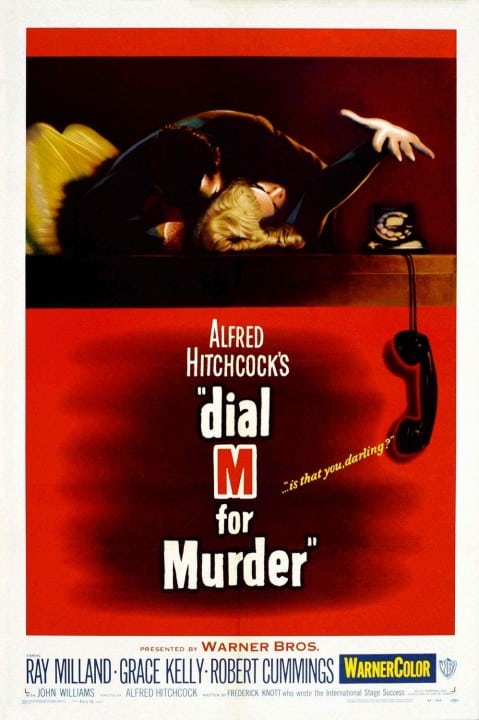
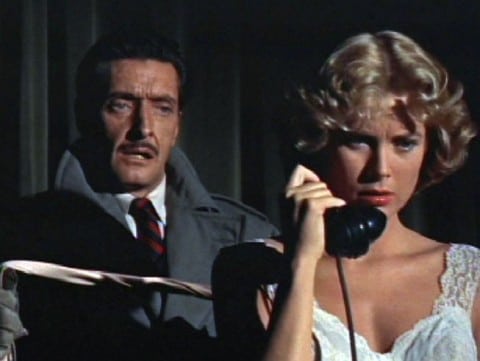
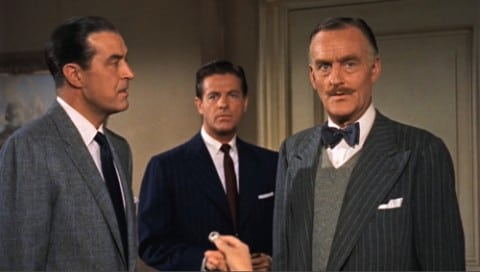




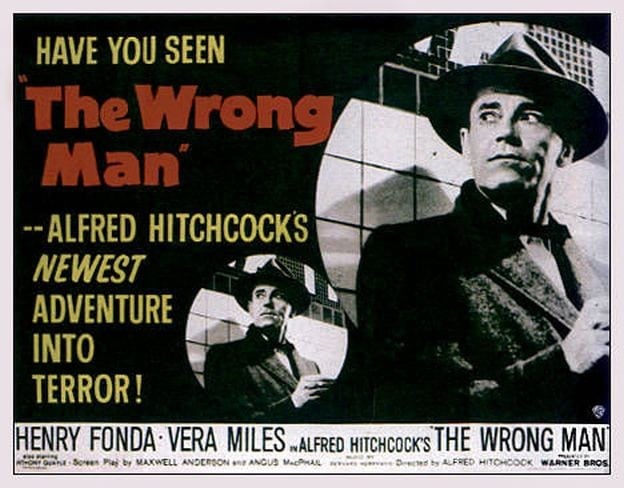
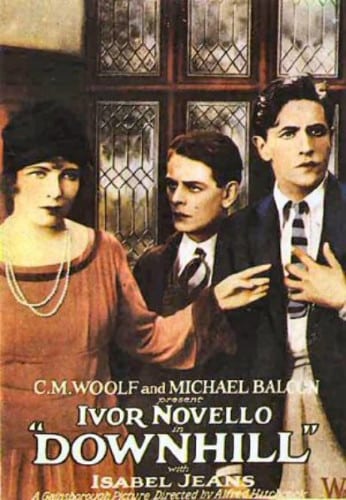
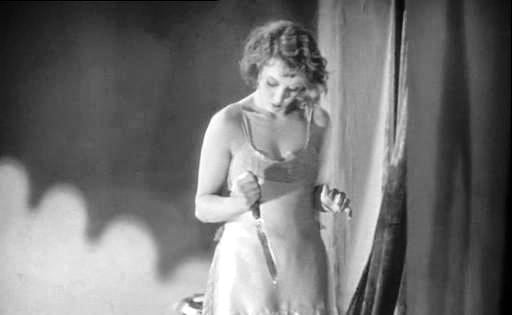
Be the first to comment